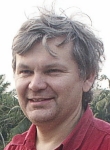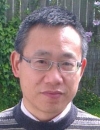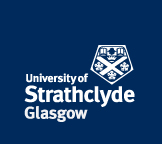The Strathclyde Intense Laser Interaction Studies (SILIS) group has a vibrant research programme which is based on high-intensity laser-plasma interactions. It is yielding exciting new results, some of which may have important industrial applications. This all comes out of having a creative group of scientists with unique tools that are focusing on new phenomena resulting from extreme states of matter created at the focus of high power lasers.
Developments of high-power femtosecond lasers have given rise to a whole new branch of research where extreme intensities produce extreme states of matter which are accompanied by the emission of high energy particles and hard X-ray photons. At these intensities, matter is fully ionised and exists as plasma where charge particles can be accelerated to highly relativistic velocities by electrostatic forces and light pressures. These forces can be harnessed to produce compact new sources of coherent and incoherent electromagnetic radiation and energetic particles, which can mimic astrophysical conditions. Indeed, a new area of laboratory scale astrophysics has sprung up around table-top terawatt femtosecond lasers.
The group at Strathclyde carries out research in several areas covering both the basic physics of the interaction of electromagnetic radiation with plasma, which is of fundamental interest, and the more applied physics of femtosecond laser micromachining, that is of significant industrial relevance. The group, which consists of around 20 academic and research staff members, technicians and students, undertakes several projects using both experimental and theoretical methods. In addition to the ALPHA-X laser wakefield accelerator development, the group also investigates non-linear optics of laser-plasma interactions and the basic physics of laser-cluster interactions. Many of these studies investigate the interaction of lasers with plasma as potential electromagnetic sources from terahertz frequencies to the hard X-rays. The experimental workhorse for the group’s studies is a collection of synchronised Ti:sapphire femtosecond lasers producing up to 20 terawatts at the TOPS facility at Strathclyde. The group also carries out collaborative research at other facilities in the UK and abroad.
Other research in the group utilises some of the highest power lasers in the world, such as Vulcan Petawatt at the Rutherford Appleton Laboratory (STFC), as well as the TOPS lasers in order to investigate laser-driven ion acceleration, transmutation and heavy ion nuclear reactions. These open up the possibility of many laser-based medical applications, for example, medical isotope production or proton-based therapy.
Prof. Dino Jaroszynski
email: d.a.jaroszynski@strath.ac.uk

Professor Dino Anthony Jaroszynski was born in Finland in 1955, grew up in South Africa and settled in the UK in 1977 to complete his studies. He was awarded a first degree in physics and a PhD from the University of Manchester and worked as a research fellow at a number of well-known European laboratories between 1983 and 1996 before taking up a permanent position at the University of Strathclyde. Over this period he established an international reputation and made a number of significant advances in the field of collective radiation-matter interactions, a theme that still dominates his current activities. His publication record of more than 120 peer-reviewed works, many of which represent pioneering accomplishments, is a testament to his creative output. He also contributes to teaching at Strathclyde. He has set up a new Scottish user facility, the Strathclyde Electron and Terahertz to Optical Pulse Source (TOPS). The facility provides unique state-of-the-art research tools including a terawatt laser beam for the study of high field ultra-short pulse radiation-matter interactions, and several synchronised sources for time resolved studies using pump-probe techniques tuneable over a wide spectral range, from X-rays to terahertz frequencies. A rapidly growing user community utilises the sources for both basic research and industrial applications.
Dino’s main research activities have been in the area of collective radiation-matter interactions in atomic systems, free-electron laser (FEL)-like devices and more recently in plasmas. The most outstanding of his scientific achievements was the first demonstration and study of superradiance in a FEL. In this work he demonstrated all the basic scaling laws of superradiance and showed that superradiant amplification is accompanied by a simultaneous reduction in the pulse duration, which leads to extremely stable electromagnetic pulses with durations approaching a single cycle. This research has major implications for the development of the next generation tuneable x-ray and far-infrared FEL sources and the next generation of ultra-high intensity lasers. His other achievements include harmonic generation, self-amplification of spontaneous emission (SASE), two-colour operation and coherent spontaneous emission in the free-electron laser. Dino has also been deeply involved in the design, creation and utilisation of FELs at two very successful European user facilities: FELIX in Holland and CLIO in France. Since arriving at Strathclyde he has continued this research activity in collective radiation interactions and broadened it to the study of low energy FELs operating at microwave frequencies. More recently he has formed a new group to extend these studies to include non-linear optical phenomena, parametric processes and collective radiation emission from plasmas, semiconductors and dielectric particles. This new exciting activity should contribute to the development of the next generation of high power lasers and advanced high brightness laser-plasma accelerators that could form the basis of compact tuneable coherent X-ray sources. The combination of these different areas of physics has the potential of resulting in significant scientific advances that could underpin numerous areas of UK science over the next decades.
He is involved in a number of other collaborative research projects at Strathclyde and coordinated a EU/INTAS project involving Russian, Belarus and Dutch teams to develop new terahertz sources based on low energy electron beams. He has projects project to study ultra-short electron bunch generation, laser-plasma acceleration, coherent scattering in semiconductor plasmas and surface physics. He led the consortium to undertake a Basic Technology Development programme, ALPHA-X, to investigate laser-plasma accelerators and their applications. He has a number of international collaborations with groups in the UK, Italy, Russia, France, the Netherlands, USA and China.
He now heads the TOPS section of the SILIS group, undertaking an experimental and theoretical programme to study collective parametric plasma/electro-magnetic radiation interactions, laser-plasma accelerators and free-electron lasers. The programme includes the study of superradiant amplification, electromagnetically induced transparency, guiding, high harmonic generation from relativistic plasmas and terahertz emission from periodically magnetised plasmas. These studies are contributing to the development tuneable X-ray and terahertz sources. He is Director of the ALPHA-X project which began in 2002 and Principal Investigator on the current EPSRC grant.
Prof. Zheng-Ming Sheng
e-mail: zhengming.sheng@strath.ac.uk

Zheng-Ming is a co-investigator on the current EPSRC grant. He works on the fundamental physics of relativistic laser-plasma interactions and their applications in advanced particle accelerators and novel radiation sources, inertial confined fusion, high energy density physics, and laboratory astrophysics by theory and numerical simulations.
Prof. Bernhard Hidding
e-mail: bernhard.hidding@strath.ac.uk

Bernhard is a co-investigator on the current EPSRC grant. He joined the Department of Physics in 2013 and holds the Chair of Experimental Physics at SCAPA. His research concentrates on laser wakefield acceleration (LWFA) and beam-driven plasma wakefield acceleration (PWFA) of electrons, and resulting applications such as imaging techniques and advanced light sources.
Prof. Paul McKenna
e-mail: paul.mckenna@strath.ac.uk

Paul is a co-investigator on the current EPSRC grant. He is a Professor at Strathclyde and his research is focused on:
High power laser-driven ion acceleration;
Inertial Fusion Energy: Energetic electron transport in dense plasma;
Nuclear physics driven by high power lasers;
Dynamics of atomic and molecules in intense laser fields.
Dr Marie Boyd
e-mail: marie.boyd@phys.strath.ac.uk

Marie is a co-investigator on the current EPSRC grant. She is a Reader at the Strathclyde Institute of Pharmacy and Biomedical Sciences (SIPBS) and her profile can be found here.
Group members
Details on all the group members can be found here.

